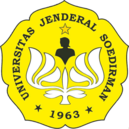THE SPEECH ACT EXPRESSIVE FUNCTIONS WITHIN THE INTERACTIONS OF TOURISM ACTORS WITH THE JAPANESE TOURISTS IN BALI
Abstract
This qualitative research within the tourism domain aims at describing the tourism actors expressive speech act in both formal and informal situations. The main theory used to conduct the analysis is the speech act referring to the tourism actors’ expressive speech act functions in providing services to the tourists, especially those coming from Japan. This research is conducted in Badung and Gianyar, Bali as both locations have the highest numbers of Japanese tourists. The primary data source is written utterances from the tourism actors containing the expressive functions, supported with the secondary data source in the form of documents on the number of tourists in Bali. The data are collected through observation, listening and writing as well as recording and in-depth interview followed with Spradley analytical technique consisting of domain analysis, taxonomy analysis, componential analysis and cultural thematic analysis. Based on the result of analysis, this research shows that the tourism actors when providing services to the Japanese tourists in both formal and informal situations use the expressive functions to express gratitude, compliment, apology, sympathy, and greeting when interacting as the best hospitality forms in their position as the service providers in the tourism domain
References
Budiarsa, Made, 2006. “Penggunaan Bahasa dalam Ranah Pariwisata Di Beberapa Hotel di Kuta, Kabupaten Badung, Bali’. Disertasi. Yogyakarta:Universitas Gadjah Mada.
Chaer & Agustina.1995. Sosiolinguistik:Suatu Pengantar. Jakarta: Rineka Cipta.
Gunarwan Asim. 2007. Pragmatik Teori dan Kajian Nusantara. Jakarta: Universitas Atmajaya.
Horton dan Hunt. 1987. Sosiologi Jilid I, Jakarta: Erlangga.
Kristianto, Yohanes. 2009. ”Tuturan Wisatawan Jerman Di Bali: Sebuah Studi Perilaku Berbahasa”. Tesis. Denpasar: Program Studi Linguistik Pascasarjana Universitas Udayana.
Leech, G. 1983. Principles of Pragmatics. London and New York : Longman.
Leech, G.1993. Prinsip-Prinsip Pragmatik (diterjemahkan oleh M.D.D.Oka). Jakarta: Penerbit Universitas Indonesia.
Levinson, C. 1983. Pragmatics. Cambridge : Cambridge University Press.
Levinson, C. 1989. Pragmatics. Cambridge: Cambridge Universitas Press.
Parker, Frank. 1986. Linguistics For Non- Linguists. Taylor & Francis Ltd.
Santosa, R. 2014. Metode Penelitian Kualitatif (Draf Buku). Surakarta: FSSR Universitas Sebelas Maret.
Santosa, R. 2017. Metode Penelitian Kualitatif Kebahasaan. Surakarta: UNS Press.
Searle, Jhon R. 1969. Speech Acts, An Essay in The Philosophy of Language. Cambridge University Press.
Subroto, Edi. 2008 “Pragmatik dan Beberapa Segi Metode Penelitiannya”, Makalah, Universitas Atma Jaya. Jakarta.
Spradley, J.P. 1980. Participant Observation. New York: Holt, Rinehart and Winston.
Spradley, J.P. 1997. Metode Etnografi. Pent. Misbah Zulfa Elisabeth. Yogyakarta: Tiara Wacana.
Yule, G. 1996. Pragmatics. New York: Oxford University Press.
Authors who publish with Jurnal Ilmiah Lingua Idea agree to the following terms:
- Authors retain copyright and grant the journal right of first publication with the work simultaneously licensed under a Creative Commons Attribution License (CC BY-SA 4.0) that allows others to share the work with an acknowledgment of the work's authorship and initial publication in this journal.
- Authors are able to enter into separate, additional contractual arrangements for the non-exclusive distribution of the journal's published version of the work (e.g., post it to an institutional repository or publish it in a book), with an acknowledgment of its initial publication in this journal.
- Authors are permitted and encouraged to post their work online (e.g., in institutional repositories or on their website) prior to and during the submission process, as it can lead to productive exchanges, as well as earlier and greater citation of published work.





















.png)






